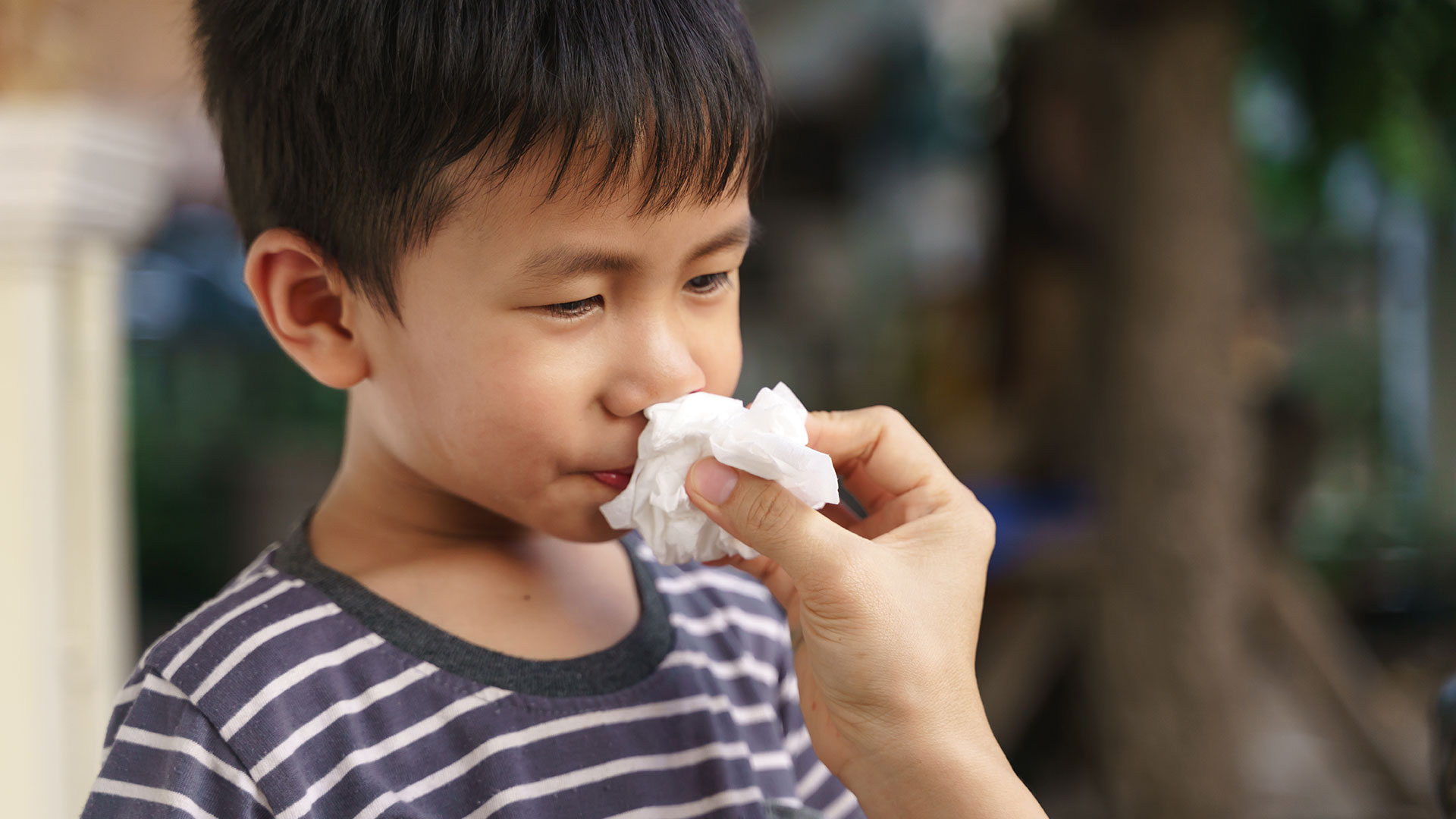
Nosebleeds can be messy and annoying, but they are manageable at home most of the time.
It’s become a parenthood rite of passage: your child bursts in through the front door crying, a few droplets of blood trickling out of their nose. Fortunately, nosebleeds are some of the most common childhood injuries out there, and almost all of them can be addressed right at home in under 15 minutes.
March is Bleeding Disorders Awareness Month, and we recommend that parents invest some time in learning more about what to do when a nosebleed may signify something more serious than nose picking scratches or allergies. Monitoring the frequency of your child’s nosebleeds as well as concurrent symptoms will help you gauge when to treat them at home and when to schedule a doctor’s appointment.
What causes children’s nosebleeds?
Most children will experience at least one nosebleed in their lifetime, though the reasons why vary from child to child. Parents can typically figure out what caused the nosebleed by monitoring their kid’s habits and health. The most common reasons why children experience nosebleeds include the following:
- Excessive nose picking
- Excessive nasal spray use
- Dry skin, possibly from weather conditions
- Allergies or a sinus infection
- A cold or flu
- Bacterial infections
- Acne or nasal polyps
- An injury to the nose, such as tumbling off a bike or getting hit with a ball
Luckily, parents can treat the majority of nosebleed incidents at home with no special equipment. It’s a quick and easy process so your kid can get right back up and return to their normal activities.
How to stop children’s nosebleeds?
Putting an end to your child’s nosebleeds is as easy as 1-2-3. Quite literally, because it takes only three steps!
- Tilt your child’s head forward, if possible over a basin or a towel to catch the blood. Sometimes kids and parents have the urge to lean the child back, but this can send blood down the nasal passage and into the throat.
- You or your child should pinch their nose below the bridge, near the nostrils, shutting off the flow. Do not place tissues or other absorbing materials in your child’s nose, as this may further irritate the bleeding site.
- Wait for about 10 minutes or so and the bleeding should subside.
Some parents and children prefer applying ice to the bridge of the nose to help curb the blood flow, but it isn’t necessary. It’s normal for children to have a few nosebleeds a year, especially during the drier winter months, so they shouldn’t cause much alarm. There are some situations, however, when we recommend that parents seek out a medical professional’s advice.
When should I worry about my child’s nosebleeds?
As a parent, any discomfort or pain your child experiences might tempt you to run straight to the doctor. Fortunately, the majority of nosebleeds won’t require medical attention. The nosebleed incidents that do need to be addressed immediately include the following:
- If there’s an object lodged in your child’s nose
- If your child recently began a new prescription, as it may be a side effect
- If your child recently suffered a head injury
- If your child is bleeding from orifices other than their nose
- If your child is badly bruised elsewhere on the body
- If your child experiences dizziness or a headache
- If your child faints
- If the child’s nosebleeds happen regularly
- If your child’s nosebleeds cannot be stopped after 10 minutes of consistent pressure
- If your child’s nosebleeds produce excessive amounts of blood
Depending on your child’s medical history, recent activity, and other presenting symptoms, the nosebleeds may be a signifier of the following conditions:
- Internal injuries
- Chronic allergies
- Hemophilia or other blood disorder
- High blood pressure
- Cancer
- Abnormal blood clotting
- Abnormal growths
All of this understandably sounds scary. Remember, though, that most childhood nosebleeds are more annoying than genuinely dangerous. We always encourage parents to maintain situational awareness, of course, but the majority of the time, those messy, inevitable nosebleeds are just a normal part of being a kid. If you do notice that the nosebleed seems like more than your average nosebleed, seek medical attention.
Your Baytown child health & safety resource
Many of us at Patients ER are parents ourselves, so we understand the anxiety that comes when your little ones experience pain and injury. We’re here to answer any questions you have about your child’s nosebleeds and whether or not further medical intervention might be necessary. Please don’t hesitate to give us a call at 281-576-0555 or send us a message through our website.

 Food Allergies: How to Know if Your Child is Allergic to Certain Foods
Food Allergies: How to Know if Your Child is Allergic to Certain Foods